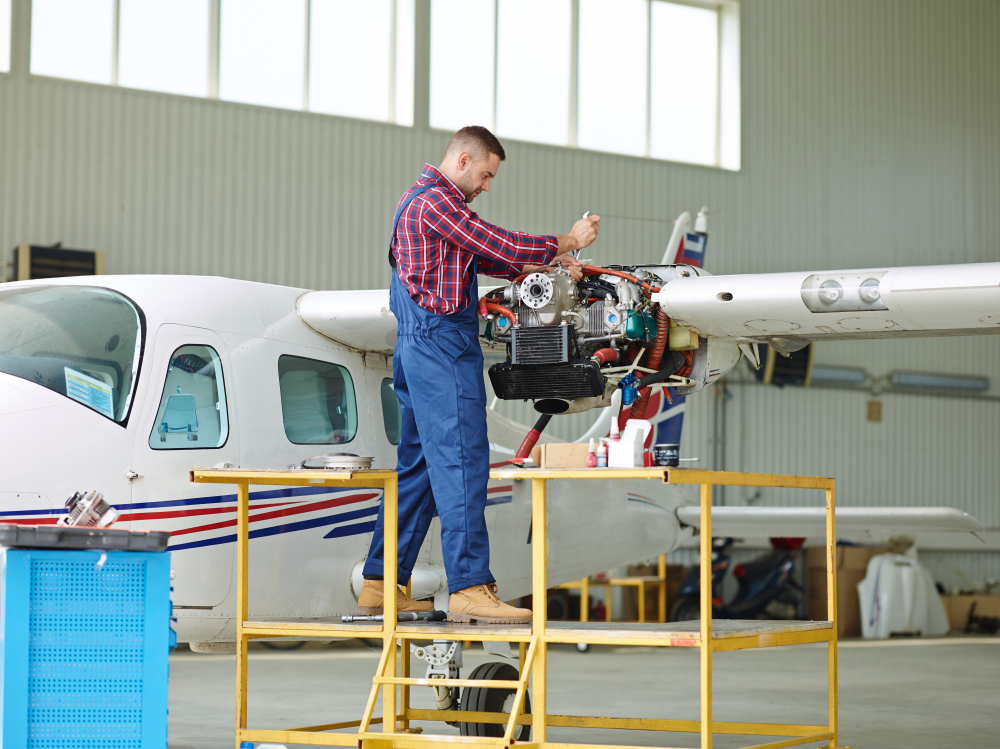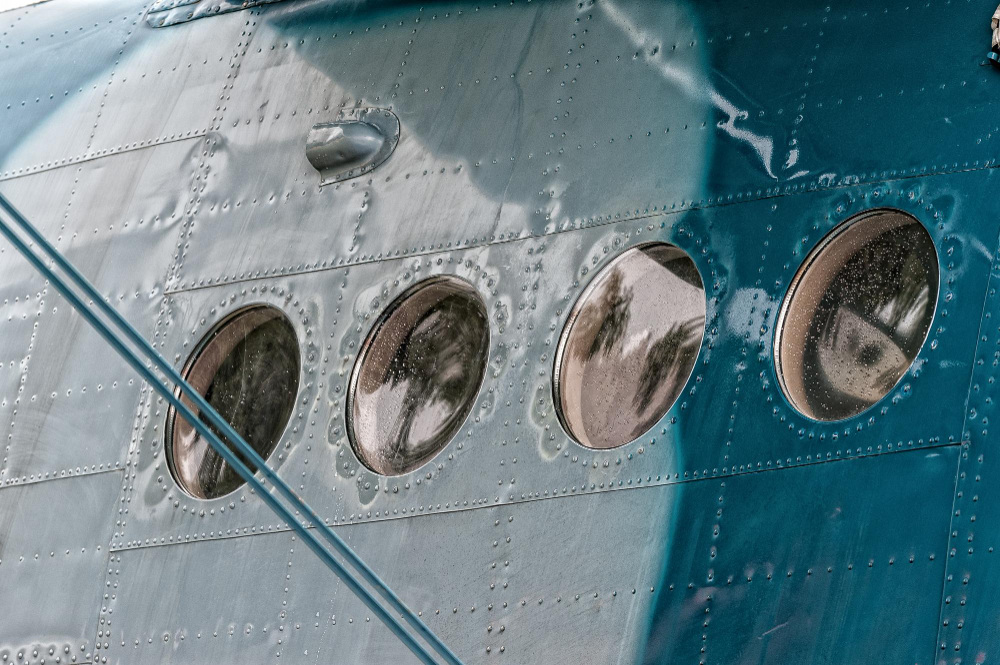Comprehensive Strategies for Preventing and Mitigating Corrosion in Aviation

Corrosion, in the context of aviation and beyond, is a critical concern affecting various industries and materials. It refers to the gradual deterioration of a material (usually metal) or its properties due to chemical or electrochemical reactions with its environment. This degradation can lead to significant safety risks in Corrosion in Aviation, operational inefficiencies, and increased maintenance costs. Effective Corrosion in Aviation management is essential to ensure the longevity and reliability of critical infrastructure and equipment.
Importance of Addressing Corrosion in Aviation
Safety: Corrosion weakens metal structures, compromising the safety and integrity of aircraft. It can lead to structural failures or component malfunctions if not detected and managed properly.
Maintenance Costs: Corrosion increases maintenance costs significantly. Regular inspections, repairs, and sometimes replacements are necessary to ensure aircraft remain airworthy and safe.
Operational Efficiency: Corrosion-related maintenance can cause delays and disruptions to flight schedules, affecting operational efficiency and airline profitability.
Regulatory Compliance: Aviation authorities have strict regulations regarding aircraft maintenance and safety standards. Failure to address corrosion can lead to non-compliance and regulatory penalties.
Environmental Impact: Improper disposal of corrosion control materials and chemicals can have environmental consequences. Proper corrosion management includes environmentally responsible practices.
Longevity of Aircraft: Effective corrosion prevention and control measures extend the lifespan of aircraft, ensuring they remain in service for their intended operational life.
In aviation, corrosion is a critical concern due to its potential impact on the structural integrity and safety of aircraft. Here are some types of corrosion commonly encountered:
Uniform Corrosion: This occurs evenly across the surface of a metal, causing gradual degradation of material thickness.
Pitting Corrosion: Characterized by localized damage in the form of pits or small holes on metal surfaces, often deeper than they are wide.
Galvanic Corrosion: Caused by the electrochemical reaction between dissimilar metals in the presence of an electrolyte (e.g., moisture), leading to accelerated corrosion of one metal.
Stress Corrosion Cracking: Occurs under tensile stress in the presence of a corrosive environment, causing cracking without significant deformation.
Fretting Corrosion: Results from repeated small-scale relative motion between two surfaces under load, leading to wear and corrosion damage.
Types of corrosion in Aviation
In aviation, corrosion is a critical concern due to its potential impact on the structural integrity and safety of aircraft. Here are some types of corrosion commonly encountered:
Uniform Corrosion: This occurs evenly across the surface of a metal, causing gradual degradation of material thickness.
Pitting Corrosion: Characterized by localized damage in the form of pits or small holes on metal surfaces, often deeper than they are wide.
Galvanic Corrosion: Caused by the electrochemical reaction between dissimilar metals in the presence of an electrolyte (e.g., moisture), leading to accelerated corrosion of one metal.
Stress Corrosion Cracking: Occurs under tensile stress in the presence of a corrosive environment, causing cracking without significant deformation.
Fretting Corrosion: Results from repeated small-scale relative motion between two surfaces under load, leading to wear and corrosion damage.
These types of corrosion can be particularly problematic in aircraft due to the wide range of materials used and the challenging environmental conditions they face during operation and storage. Preventive maintenance and regular inspections are crucial to mitigating corrosion in aviation risks .
Environmental Conditions
Humidity: High humidity levels Corrosion in Aviation can accelerate corrosion by providing moisture necessary for electrochemical reactions.
Salt Air: Aircraft operating near coastal areas or in regions with salt-laden air are more prone to corrosion in aviation due to sodium chloride.
Pollutants: Chemical pollutants in the atmosphere can exacerbate corrosion in aviation processes.
Operational Factors
Temperature Changes: Rapid changes in temperature can lead to condensation and moisture buildup, increasing corrosion in aviation risk.
Mechanical Stress: Stresses from flight operations, such as vibrations and impacts, can compromise protective coatings and expose metal surfaces to corrosion.
- Material Selection and Compatibility
- Choosing appropriate materials with resistance to corrosion is crucial.
- Compatibility of dissimilar metals to prevent galvanic corrosion is also important.
Maintenance Practices
Regular inspections and maintenance to detect and address corrosion early.
Proper storage and handling procedures to minimize exposure to corrosive environments during maintenance and storage.
Addressing these factors through preventive measures, such as protective coatings, corrosion-resistant materials, and comprehensive maintenance programs, is essential to mitigating corrosion in aviation and ensuring their structural integrity and safety.
Critical Areas Prone to Corrosion in Aviation
Description: The fuselage is the main body of the aircraft, and the wings are the large structures that provide lift.
Corrosion Risks: These parts are exposed to varying weather conditions, moisture, and temperature changes. The external surfaces can suffer from oxidation and exposure to salts, particularly in marine environments or areas with high humidity.
Common Corrosion Types: Surface corrosion, pitting, intergranular corrosion.
Landing Gear
Description: The landing gear is the structure that supports the aircraft during landing and takeoff.
Corrosion Risks: Frequent exposure to water, de-icing fluids, and runway contaminants like salt and chemicals increases the risk of corrosion in aviation. The landing gear also experiences significant mechanical stress.
Common Corrosion Types: Stress corrosion cracking, fretting corrosion, galvanic corrosion (due to contact between different metals).
Engine Components
Description: This includes various parts such as turbine blades, compressor sections, and exhaust areas.
Corrosion Risks: Engine components are exposed to high temperatures, humidity, and contaminants like sulfur compounds and chlorides in the air. Combustion processes can also introduce corrosive by-products.
Common Corrosion Types: High-temperature oxidation, hot corrosion, sulfidation.
Electrical Systems
Description: This includes wiring, connectors, and circuit boards throughout the aircraft.
Corrosion Risks: Electrical systems are sensitive to moisture and chemical exposure, which can cause short circuits and failures. Condensation and fluid leaks can also contribute to corrosion.
Common Corrosion Types: Electrolytic corrosion, pitting, and crevice corrosion.
Fuel Tanks
Description: Fuel tanks store the aircraft’s fuel and are often located in the wings or fuselage.
Corrosion Risks: They are vulnerable to water contamination in fuel, microbial growth, and the presence of corrosive elements in fuel additives. The interior surfaces of the tanks can also corrode due to condensation.
Common Corrosion Types: Microbiologically influenced corrosion (MIC), pitting corrosion, crevice corrosion.
Corrosion Management Programs in Aviation
Effective management of corrosion in aviation involves structured programs that encompass regulatory requirements, airline-specific initiatives, and training for maintenance personnel. Here’s an in-depth look at each component:
Regulatory Requirements
Inspection Schedules: Mandatory regular inspections to identify and assess corrosion in aviation.
Maintenance Protocols: Standardized procedures for addressing corrosion, including cleaning, repair, and part replacement.
Documentation and Reporting: Detailed record-keeping of corrosion-related maintenance activities and reporting of significant findings to regulatory authorities.
Compliance Audits: Periodic audits to ensure adherence to established corrosion control standards.
Airline-Specific Programs
Description: Individual airlines develop tailored corrosion management programs to address their specific operational environments and fleet characteristics.
Custom Inspection Intervals: Adjusted inspection intervals based on aircraft usage, routes, and environmental exposure.
Proactive Measures: Implementation of preventive measures such as the application of corrosion inhibitors, use of corrosion-resistant materials, and enhanced protective coatings.
Data-Driven Decisions: Use of historical data and trend analysis to predict and prevent corrosion in aviation issues, improving overall maintenance planning and efficiency.
Fleet-Specific Procedures: Customized maintenance and inspection protocols that consider the unique configurations and usage patterns of the airline’s fleet.
Training for Maintenance Personnel
Description: Comprehensive training programs are essential to equip maintenance personnel with the knowledge and skills needed to effectively manage corrosion in aviation.
Technical Training: In-depth courses on the principles of corrosion, identification of different types of corrosion, and understanding of the materials and coatings used in aircraft construction.
Practical Workshops: Hands-on training sessions that provide real-world experience in detecting and treating corrosion.
Continuous Education: Ongoing training to keep personnel updated on the latest technologies, materials, and regulatory changes related to corrosion control.
Certification Programs: Formal certification for personnel who complete advanced corrosion management training, ensuring a high standard of expertise within the maintenance team.
Effective strategies for preventing and mitigatng corrosion in aviation involve a combination of protective measures, advanced technologies, and rigorous maintenance practices. Here’s an overview of key strategies:
Protective Coatings and Treatments
Description: Applying protective coatings and treatments to aircraft surfaces is a primary method for preventing corrosion.
Paints and Primers: Specially formulated aviation paints and primers create a barrier that protects the metal surfaces from environmental factors such as moisture, salt, and pollutants.
Anodizing and Plating: Anodizing aluminum components and plating other metals (e.g., cadmium plating) enhance corrosion resistance by adding a protective oxide or metallic layer.
Sealants: Using sealants in joints, seams, and fasteners to prevent moisture ingress and corrosion initiation.
Corrosion Inhibitors: Chemical treatments that inhibit the electrochemical reactions responsible for corrosion can be applied during manufacturing or maintenance.
Cathodic Protection
Description: Cathodic protection involves preventing corrosion by making the aircraft’s metal surfaces the cathode of an electrochemical cell.
Sacrificial Anodes: Attaching more reactive metal anodes (e.g., zinc, magnesium) to the aircraft structure. These anodes corrode preferentially, protecting the primary structure.
Impressed Current Systems: Using an external power source to provide a continuous flow of electrons, thereby protecting the metal surfaces from oxidation.
Material Selection and Design Considerations
Description: Choosing corrosion-resistant materials and designing components with corrosion prevention in mind.
Corrosion-Resistant Alloys: Using materials like stainless steel, titanium, and corrosion-resistant aluminum alloys in aircraft construction.
Composite Materials: Incorporating composites that are less prone to corrosion compared to traditional metals.
Design Modifications: Designing aircraft components to minimize corrosion-prone areas, such as reducing crevices, using fewer dissimilar metal contacts, and ensuring proper drainage and ventilation.
Surface Treatments: Applying surface treatments during manufacturing to enhance corrosion resistance, such as shot peening to induce beneficial compressive stresses.
Improved Maintenance Procedures
Description: Implementing rigorous and systematic maintenance procedures to detect and address corrosion early.
Regular Inspections: Conducting frequent and thorough inspections to identify early signs of corrosion and assess the condition of protective coatings and treatments.
Cleaning and Decontamination: Regularly cleaning aircraft surfaces to remove contaminants like salt, dirt, and industrial pollutants that can accelerate corrosion.
Timely Repairs: Promptly repairing any detected corrosion damage to prevent it from spreading and compromising structural integrity.
Documentation and Monitoring: Keeping detailed records of maintenance activities and corrosion occurrences to monitor trends and improve future prevention strategies.
Frequently Asked Questions
What is corrosion and why is it a concern in aviation?
Corrosion is the gradual deterioration of a material, typically metal, due to chemical or electrochemical reactions with its environment. In aviation, corrosion compromises the structural integrity and safety of aircraft, leading to increased maintenance costs, operational inefficiencies, and safety risks.
How do protective coatings and treatments help in preventing corrosion?
Protective coatings and treatments create barriers that prevent environmental factors like moisture, salt, and pollutants from reaching the metal surfaces. They include aviation paints, primers, anodizing aluminum components, plating metals, and applying sealants and corrosion inhibitors.
What is cathodic protection and how does it work?
Cathodic protection prevents corrosion by making the aircraft’s metal surfaces the cathode of an electrochemical cell. It uses sacrificial anodes (more reactive metals like zinc or magnesium) that corrode instead of the protected metal, or impressed current systems that provide a continuous flow of electrons to prevent oxidation.
What role does material selection play in preventing corrosion?
Choosing corrosion-resistant materials such as stainless steel, titanium, and corrosion-resistant aluminum alloys helps in minimizing corrosion. Additionally, using composite materials and designing components to reduce crevices and dissimilar metal contacts can also mitigate corrosion risks.
Closing Insight
Corcon’s comprehensive approach to corrosion in aviation management not only ensures compliance with regulatory standards but also enhances the overall safety, efficiency, and longevity of aircraft. By incorporating these strategies, aviation stakeholders can effectively mitigate the risks associated with corrosion, ensuring the continued reliability and safety of their fleets.
Image Reference: Freepik
Disclaimer: All trademarks, logos, and brand names are the property of their respective owners. All company, product, and service names used in this website are for identification purposes only. Use of these names, trademarks, and brands does not imply endorsement.

